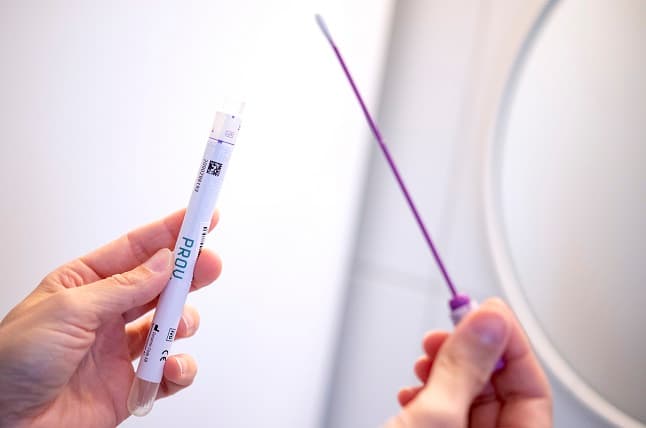What do we know about Sweden's R-number as coronavirus cases rise?

Swedish health authorities say that one of the key indicators of the coronavirus infection rate remains at a safe level nationwide, despite sharp rises in cases in some cities and regions – but there are some caveats to the data.
One of the key measures that help show how the coronavirus is spreading in a country is the so-called basic reproduction number – R number or R0 – which ideally you want to keep under 1.
An R0 of 1 means that each person infected with the virus is passing it on to one other person, and if it's below this it is a sign that the infection is slowing down. If it's above 1, it means the virus will continue to spread exponentially. But it is not an exact indicator of how the virus is forecast to develop; it is possible for the R0 to fall only to climb back up again, as has happened in many countries.
In the latest analysis by the Swedish Public Health Agency, which reflects the situation as of September 24th, the R-number is estimated at 0.89.
According to the agency, Sweden's R-number reached its peak in March at an estimated level of 1.69 and since then has been falling before staying stable around 1.0 between early April and mid-June. It reached 1.15 on September 15th, and 1.0 on September 20th before dropping below 1 on September 24th.
The analysis warns that the estimates should be "interpreted carefully" especially for the later days, since the calculations may be affected by delays in reporting.
It's also important to note that Sweden excludes so-called "mild cases" of the coronavirus from its calculations of the R-number.
This is so that the results are comparable throughout the whole epidemic, since Sweden has changed its testing criteria and only allowed for widespread testing of the population since summer, but it also means that the calculation is unlikely to reflect the true spread of infection without taking mild or asymptomatic cases into account.
In Stockholm, for example, the number of positive tests for the coronavirus has almost doubled week on week from 537 to 923. Although this rise is not yet reflected in the number of hospital admissions or intensive care cases, the regional healthcare director said his team was "seriously concerned" by the rise and urged all Stockholmers to keep following recommendations.
Comments
See Also
One of the key measures that help show how the coronavirus is spreading in a country is the so-called basic reproduction number – R number or R0 – which ideally you want to keep under 1.
An R0 of 1 means that each person infected with the virus is passing it on to one other person, and if it's below this it is a sign that the infection is slowing down. If it's above 1, it means the virus will continue to spread exponentially. But it is not an exact indicator of how the virus is forecast to develop; it is possible for the R0 to fall only to climb back up again, as has happened in many countries.
In the latest analysis by the Swedish Public Health Agency, which reflects the situation as of September 24th, the R-number is estimated at 0.89.
According to the agency, Sweden's R-number reached its peak in March at an estimated level of 1.69 and since then has been falling before staying stable around 1.0 between early April and mid-June. It reached 1.15 on September 15th, and 1.0 on September 20th before dropping below 1 on September 24th.
The analysis warns that the estimates should be "interpreted carefully" especially for the later days, since the calculations may be affected by delays in reporting.
It's also important to note that Sweden excludes so-called "mild cases" of the coronavirus from its calculations of the R-number.
This is so that the results are comparable throughout the whole epidemic, since Sweden has changed its testing criteria and only allowed for widespread testing of the population since summer, but it also means that the calculation is unlikely to reflect the true spread of infection without taking mild or asymptomatic cases into account.
In Stockholm, for example, the number of positive tests for the coronavirus has almost doubled week on week from 537 to 923. Although this rise is not yet reflected in the number of hospital admissions or intensive care cases, the regional healthcare director said his team was "seriously concerned" by the rise and urged all Stockholmers to keep following recommendations.
Join the conversation in our comments section below. Share your own views and experience and if you have a question or suggestion for our journalists then email us at [email protected].
Please keep comments civil, constructive and on topic – and make sure to read our terms of use before getting involved.
Please log in here to leave a comment.